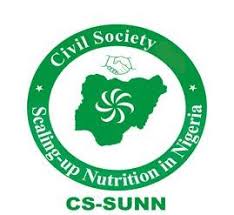
By Ahmad Umar:
Nigeria Civil Society Scaling –Up Nutrition in Nigeria has begun a four-days training to civil society organizations and Media on advocacy and budget tracking in Gombe state North-east of the country.
The State Coordinator of the CS-SUNN, Mrs. Comfort Mukollo while speaking during the opening of the training in Gombe on Tuesday, said the goal was to ensure efficient use of government resources and improve nutrition activities in the state.
She said according to Nigeria National Health Survey 2018, nutrition situation is characterized by a double burden of malnutrition with about one third of the children under-five years stunted and more than half in the northwest with a similar proportion of women overweight or obese and nearly half of the women of reproductive age (48.5 percent) are also anaemic.
“Although acute malnutrition levels are below the critical levels with global acute malnutrition (GAM) rate of 7.2%, the case loads are high, giving the population of the country. Nigeria faces the challenges of insecurity/conflict in some parts, and food deficit, and is the largest importer of rice one of the staple foods. Each year about a million Nigerian children die before their birthday. Malnutrition contributes to nearly half of these deaths.
“Pre-school age children and pregnant women are at high risk for under nutrition, high burden of under nutrition is in Asia and Sub-Saharan Africa and wasted children have greater chances to die, every day about 8,000 children die from preventable under nutrition related causes. World over, it contributes about 45% or 3.1 million child deaths a year. Across the world, 165 million, or 1 in 4 children under 5 years of age are stunted, and 80% of those live in just 14 countries and globally, it is estimated that 19 million children under 5 suffer from severe wasting, she added.
Mrs. Mukollo equally said the NNHS 2018 also shows that children and women from states in the northern geopolitical zones, boys (as compared to girls), younger children (0-23 months old compared to the 24-59 months old) and teenage women (compared to older women 20-49 years)are at a higher risk of malnutrition.
The state Coordinator said that the rate of acute malnutrition based on Mid Upper Arm Circumference was highest in North East (5.8 percent) and North West (5.7 percent) but lowest in South East Zone (2.9 percent). Disaggregation by age and sex confirms what was previously highlighted: the prevalence of acute malnutrition is highest in infants (6-11 months) and younger children – children less than 24 months than older children, and girls are more likely to be malnourished than boys 5.5 versus 3.9 percent (Table 10).
“The highest prevalence of global acute malnutrition based on MUAC was reported in Zamfara (10.3%), followed by Katsina (9.2%), Jigawa (8.5%), Sokoto (8.4%) Gombe (4.5 %) in that order, while the lowest was recorded in Imo (0.8%), followed by Anambra (1.3%), Edo (1.7%), Bayelsa (1.9%) and Delta (2%), also recording zero percent severe acute malnutrition with very little variability. Kaduna (2.4%), Jigawa (2.1%), Katsina, Sokoto and Yobe (2%) reported the highest SAM rates by MUAC.
“Generally, there was increased rates of underweight in Abia, Ebony, Bayelsa, Benue, Delta, Ekiti, Enugu, Gombe (26.9), Ogun, Ondo, Plateau, Rivers and Yobe; underweight prevalence decreased in Jigawa, Kaduna, Sokoto and Taraba. The prevalence in eleven states – Bauchi, Borno, Gombe, Jigawa, Plateau, Kano, Katsina, Kebbi, Sokoto, Yobe and Zamfara – is greater than the national estimate of 22.4 percent, a result that corresponds with 2014 and 2015 findings.
“Severe stunting shows a similar pattern, with the highest proportion of severe stunting in children age 12-23 months (13.9 percent). Percentage of stunted children over 2 years of age is significantly higher (p<0.001) than for younger children, exhibiting the consequences of stunting in early age and of long-term malnutrition. Disaggregated by sex, boys (34.8 percent; 95% CI: 33.2-36.4) are more likely to be stunted than girls (29.2 percent; 95% CI: 27.7-30.6). Since underweight, wasting (WHZ based) and stunting indicators all report the same sex difference; this finding might reflect a yet not well understood greater vulnerability of boys at this stage, which may have higher nutritional requirements than girls. The claim that boys are preferentially fed more than girls in many cultures is not true going by these findings and prevalence of stunting in North East IS 42.8 while 44.6 % are reportedly stunted in Gombe
She further said that the NNHS 2018 survey findings show mixed results, with a general improving trend in most indicators and a stagnation or deterioration in other indicators, but remain far below the national and international targets, albeit as variations continue to show in these indicators by geopolitical zones, states and age.
Acute malnutrition, she said, remain at alert levels while chronic malnutrition as characterized by stunting remain the biggest burden at serious or high levels according to the WHO/UNICEF classification by the IYCF indicators (such as breastfeeding breast feeding initiation, minimum acceptable diet and consumption of iron-fortified or iron rich foods) have stagnated since 2014.





